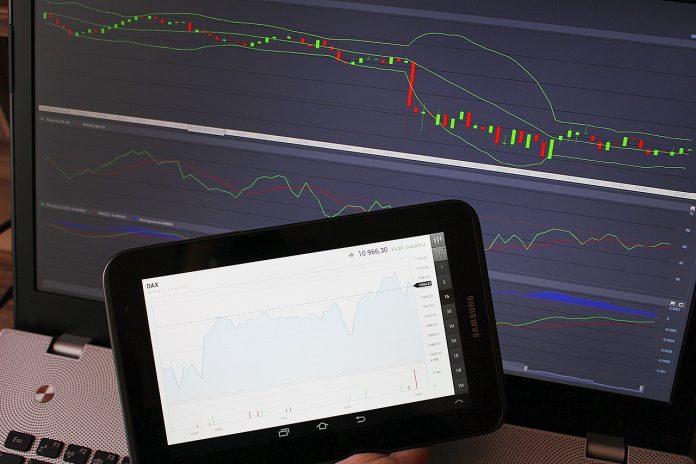Exchange-traded funds (ETFs) have become increasingly popular among Kenyan investors, providing a flexible and cost-effective way to diversify portfolios. As the financial markets evolve, optimizing ETF trading strategies with real-time data analysis is crucial for advanced traders aiming to maximize returns. This article will explore how leveraging real-time data can enhance ETF trading strategies, specifically focusing on the Kenyan market. The keyword ETFs in Kenya will guide our discussion as we delve into the critical aspects of data-driven ETF trading.
Understanding ETFs in Kenya
ETFs in Kenya have grown in popularity due to their ability to offer exposure to various asset classes, including equities, bonds, and commodities. These funds are traded on stock exchanges, providing liquidity and flexibility similar to individual stocks. For Kenyan investors, ETFs represent an opportunity to gain exposure to both local and international markets without the need to directly purchase underlying assets.
However, the key to successful ETF trading lies in making informed decisions based on real-time data. With the increasing availability of sophisticated data analytics tools, traders can now monitor market trends, analyze performance metrics, and execute trades more efficiently. This capability is particularly important in a dynamic market like Kenya, where economic factors and market conditions can change rapidly.
The Role of Real-Time Data in ETF Trading
Real-time data analysis has become a game-changer in the world of ETF trading. By accessing up-to-the-minute information, traders can make quicker, more informed decisions, reducing the risk of losses and increasing the potential for profits. In Kenya, where market volatility can be influenced by a range of factors, from political events to global economic shifts, real-time data is essential.
Here are some of the ways real-time data can optimize ETF trading strategies in Kenya:
- Market Monitoring: Real-time data allows traders to monitor market movements and respond quickly to changes. This is particularly useful in a market like Kenya, where sudden shifts in economic policy or international trade agreements can impact asset prices.
- Performance Analysis: Traders can use real-time data to analyze the performance of different ETFs, comparing metrics such as price changes, volume, and volatility. This helps in identifying trends and making informed decisions about which ETFs to buy or sell.
- Risk Management: Real-time data analysis enables traders to manage risk more effectively by setting alerts for specific price points or market conditions. This proactive approach helps in mitigating potential losses and safeguarding investments.
Implementing Real-Time Data Analysis in Kenyan ETF Trading
To optimize ETF trading strategies with real-time data analysis, Kenyan traders need to adopt specific tools and practices that align with the unique characteristics of the local market. Below are some strategies to consider:
- Utilize Advanced Trading Platforms: Choose a trading platform that offers robust real-time data analytics features. Look for platforms that provide live price feeds, advanced charting tools, and customizable alerts. This ensures that you have all the necessary information at your fingertips to make timely decisions.
- Leverage Automated Trading Systems: Automated trading systems can help you execute trades based on predefined criteria. These systems can be programmed to monitor real-time data and trigger trades when certain conditions are met, allowing for quicker response times and reducing the emotional impact of trading decisions.
- Incorporate Technical Indicators: Technical indicators such as moving averages, Relative Strength Index (RSI), and Bollinger Bands can be used to analyze real-time data and predict market trends. By incorporating these indicators into your trading strategy, you can enhance your ability to identify profitable trading opportunities in the Kenyan ETF market.
- Stay Informed with Market News: In addition to technical data, keeping abreast of market news and economic reports is crucial. Real-time news feeds can provide insights into events that may impact ETF prices, such as changes in interest rates, inflation data, or geopolitical developments.
Adapting to the Kenyan Market Environment
While real-time data analysis is a powerful tool, it is essential to adapt your strategies to the specific characteristics of the Kenyan market. This involves understanding local economic conditions, regulatory frameworks, and market dynamics.
- Understand Local Economic Indicators: Economic indicators such as GDP growth, inflation rates, and unemployment levels can have a significant impact on the performance of ETFs in Kenya. By incorporating these indicators into your real-time data analysis, you can better anticipate market movements and adjust your trading strategies accordingly.
- Monitor Regulatory Changes: Kenya’s financial markets are subject to regulatory oversight by the Capital Markets Authority (CMA). Staying informed about any changes in regulations or policies is critical for ETF traders. Real-time data can help you quickly adjust your strategies in response to new regulations, ensuring compliance and optimizing your trading performance.
Maximizing Returns through Integrated Trading Strategies
In the second part of this article, we will explore how to maximize returns by integrating real-time data analysis with other trading strategies. By combining real-time insights with traditional trading tools and techniques, Kenyan ETF traders can develop a more comprehensive approach to market participation.
Combining Real-Time Data with Fundamental Analysis
While real-time data analysis provides immediate insights into market movements, it should be complemented with fundamental analysis to create a well-rounded trading strategy. Fundamental analysis involves evaluating the underlying factors that influence the value of an ETF, such as the financial health of the companies within the ETF, industry trends, and macroeconomic conditions.
- Company Performance: Analyzing the financial statements of companies within an ETF can provide a long-term view of potential growth. Real-time data can then be used to monitor short-term price fluctuations, allowing traders to make informed decisions about entry and exit points.
- Industry Trends: Understanding the broader industry trends that impact the companies within an ETF is crucial. Real-time data can be used to track how these trends affect ETF prices on a day-to-day basis, providing traders with actionable insights.
- Economic Conditions: In Kenya, economic conditions such as interest rates, inflation, and government policies can significantly impact ETF performance. By integrating real-time data with an understanding of these economic factors, traders can better anticipate market shifts and adjust their strategies accordingly.
Utilizing Sentiment Analysis for Better Decision-Making
Sentiment analysis is another powerful tool that can be used alongside real-time data to optimize ETF trading strategies. This technique involves analyzing market sentiment—whether traders are generally optimistic or pessimistic about the market—based on data from social media, news articles, and other online sources.
- Sentiment Indicators: Tools that track sentiment indicators can provide real-time insights into the mood of the market. For example, a sudden surge in positive sentiment towards a particular sector might indicate a buying opportunity for related ETFs in Kenya.
- News and Social Media Monitoring: Real-time sentiment analysis can be conducted by monitoring news and social media for mentions of specific ETFs or market conditions. This information can then be cross-referenced with real-time price data to make more informed trading decisions.
- Market Reactions: Understanding how sentiment influences market reactions can help traders anticipate price movements. For instance, if sentiment analysis shows increasing negativity towards the global economy, traders might consider selling or hedging their positions in ETFs that are exposed to international markets.
Real-Time Data in Backtesting and Strategy Refinement
Backtesting is a crucial process for refining ETF trading strategies. By testing strategies against historical data, traders can evaluate their effectiveness before applying them in live markets. Real-time data can enhance this process by allowing for more dynamic backtesting that accounts for current market conditions.
- Dynamic Backtesting: Incorporating real-time data into backtesting allows traders to simulate how their strategies would perform under current market conditions. This approach provides a more accurate picture of potential outcomes and helps identify any weaknesses in the strategy.
- Strategy Optimization: Real-time data can be used to continuously refine and optimize trading strategies. By analyzing how different strategies perform in real-time, traders can make adjustments on the fly, improving their chances of success in the Kenyan ETF market.
- Performance Tracking: Ongoing performance tracking using real-time data helps traders stay on top of their strategies’ effectiveness. This proactive approach enables quick adjustments, ensuring that trading strategies remain aligned with market conditions.
The Future of ETF Trading in Kenya with Real-Time Data
As technology continues to advance, the role of real-time data in ETF trading will only grow more significant. For Kenyan traders, staying ahead of the curve by adopting cutting-edge tools and techniques is essential for maintaining a competitive edge.
- Artificial Intelligence and Machine Learning: The integration of AI and machine learning with real-time data analysis is likely to revolutionize ETF trading. These technologies can analyze vast amounts of data in real-time, identifying patterns and making predictions that are beyond human capabilities. Kenyan traders who leverage AI-driven tools will be better positioned to capitalize on market opportunities.
- Blockchain and Smart Contracts: Blockchain technology and smart contracts are expected to enhance transparency and efficiency in ETF trading. Real-time data feeds can be integrated with blockchain systems to create automated, tamper-proof trading environments. This could lead to more secure and efficient trading processes for ETFs in Kenya.
- Mobile Trading Platforms: The proliferation of mobile trading platforms equipped with real-time data analytics will empower more Kenyan traders to participate in the ETF market. These platforms offer the convenience of trading on the go, making it easier for traders to stay connected to the market and execute trades based on the latest data.
Embracing Real-Time Data for ETF Trading Success
In conclusion, optimizing ETF trading strategies with real-time data analysis offers a significant advantage for Kenyan traders. By integrating real-time insights with fundamental analysis, sentiment analysis, and backtesting, traders can develop more effective and dynamic trading strategies. As technology continues to evolve, the use of real-time data will become increasingly important in maintaining a competitive edge in the fast-paced world of ETF trading.
For Kenyan investors looking to optimize their ETF trading strategies, the key is to stay informed, adopt advanced tools, and continuously refine their approach. By embracing real-time data and integrating it with other trading techniques, traders can enhance their decision-making processes and ultimately achieve greater success in the ETF market.
























